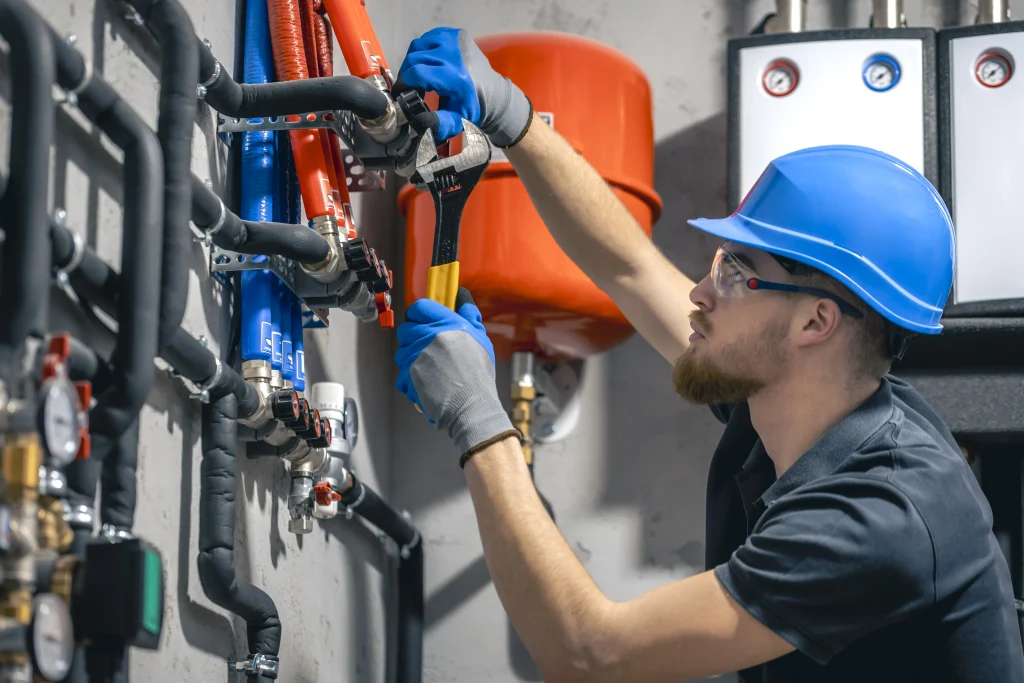
How Do You Inspect a Pressure Vessel – Essential Steps
Your Complete Guide on How Do You Inspect a Pressure Vessel
If you need to ensure a pressure vessel runs safely and meets all industry standards, the inspection process is your first line of defense. How do you inspect a pressure vessel effectively? By spotting flaws early (like weld cracks or corrosion), you reduce operational risks and extend the vessel’s lifespan. In many cases, recognized standards such as ASME (American Society of Mechanical Engineers) guide the procedures, helping you avoid costly failures. Below, we’ll walk through the major checkpoints, from quick visual reviews to detailed non-destructive testing.
How do you inspect a pressure vessel
A thorough inspection usually combines external checks, internal examination, and data verification. You’ll want to identify potential leaks, material thinning, or any structural weakness that could compromise operation. Here are the common steps in a comprehensive inspection:
Do an external survey first
- Look for signs of rust or corrosion around the shell and seams.
- Check the vessel’s pressure gauge and fittings for damage or leaks.
- Confirm all labels and safety markings are legible.
- Note any deformations or dents that might suggest hidden structural issues.
These observations give you a baseline. If everything looks sound, you can move on to more detailed steps. If you spot anything unusual, it’s best to investigate right away.
Review the interior conditions
Once you’re sure the exterior is stable, drain and depressurize the vessel. Then open it for an inside look:
- Scan for pitting or cracks along the interior walls.
- Inspect welds carefully, especially in corners or high-stress zones.
- Use good lighting, mirrors, or remote cameras for hard-to-reach areas.
This stage requires a skilled eye, because even a small flaw in a weld can lead to shell weakness over time. If you’re evaluating advanced vessels used in oil and gas or other high-stakes industries, consider using specialized tools (like borescopes) that help you reach narrow cavities.
Conduct non-destructive testing
Visual checks only go so far. Techniques like ultrasonic testing, radiographic (X-ray) inspection, or magnetic particle inspection help detect internal cracks or material thinning that you can’t see. For example:
- Ultrasonic: Sends sound waves through metal to measure thickness.
- Radiographic: Uses X-rays to spot hidden weld defects or pores.
- Magnetic particle: Highlights surface and near-surface cracks in ferrous metals.
When performed in a consistent cycle, these tests can significantly reduce the risk of sudden vessel failure. If you want to explore these methods further, you can review a deeper overview at pressure vessel manufacturing inspection.
Verify documentation and compliance
Strong documentation matters more than many realize. Make sure your vessel aligns with relevant codes and that all inspection records are updated. ASME certification, for instance, indicates that the vessel meets minimum safety guidelines for construction. This is especially vital if you plan future modifications, because inspectors will look for proof of consistent care:
- Maintenance logs with dates and findings
- Certificates like U4 or R stamps (for repairs or alterations)
- Signed-off reports from certified inspectors
When you’re also curious about how these vessels are built in the first place, see pressure vessel manufacturing for a complete breakdown of the fabrication process.
Final sign-off
After reviewing the data, complete a final safety checklist. Confirm that any repairs have been handled according to code, and that the vessel’s pressure rating is still valid. This step often includes a hydrostatic or pneumatic test to confirm the vessel’s integrity under pressure. Once you’ve cleared all steps, label your vessel and keep those records handy for regulators or future reference.
Advanced inspection methods
Some vessels operate under extreme temperatures or in chemical environments, so standard checks may not be enough. In these cases, advanced software tools can help you map areas of frequent corrosion or stress. Companies like Red River, an ASME-certified manufacturer, integrate rigorous quality control measures (including full traceability of materials) from the start to reduce headaches come inspection time. Prefabrication in a controlled environment is also an emerging trend. It allows tighter oversight of every weld, which can simplify your on-site inspection in the long run.
How Do You Inspect a Pressure Vessel Effectively
A thorough inspection is both a proactive safety measure and an investment safeguard. How do you inspect a pressure vessel properly? You start by examining the vessel’s exterior, then move inside to assess welds and surfaces, and finally run non-destructive tests to detect hidden flaws. Documentation and certifications ensure ongoing compliance.
A well-inspected vessel not only protects people and property but also reduces downtime and costs. Partnering with a reputable manufacturer that follows ASME guidelines and advanced fabrication methods makes the entire process more efficient.
Need a reliable partner?
Red River specializes in the design and manufacturing of pressure vessels. We also fabricate related items such as prefabricated spools and modular skids.
Reach out to us today and experience the Red River difference. Where American-made products and American Values come together, we care more.
Frequently Asked Questions
1. What is pressure vessel manufacturing inspection?
Pressure vessel manufacturing inspection is a comprehensive quality control process that occurs during fabrication to ensure the vessel meets design specifications, material standards, and safety codes like ASME before it enters service.
2. How often should pressure vessels be inspected?
Pressure vessels should typically be inspected annually for routine checks, with more thorough inspections every 3-5 years depending on the operating conditions, regulatory requirements, and the vessel’s age and service history.
3. Is a visual inspection enough?
No. Visual checks can miss hidden cracks or thinning. Non-destructive testing is essential for a full picture of vessel health.
4. Do I need to shut down the vessel for inspection?
Usually yes. Vessels must be depressurized and emptied for internal checks. Some external tests can be done during partial operation.
5. Are prefabricated pressure vessels easier to inspect?
Yes. Controlled environment fabrication often improves weld quality, simplifying future inspections.
6. Does documentation really matter for inspections?
Absolutely. Proper logs prove compliance, speed inspections, and record past repairs or part replacements.
Key takeaways
- Catching minor flaws early helps you avoid major repairs or accidents.
- Combining visual checks with non-destructive testing reveals both surface and hidden issues.
- ASME certification ensures a baseline for safety and reliability.
- Regularly updated documentation streamlines future inspections and approvals.
- Prefabrication and quality control from a reputable vessel manufacturer can reduce overall inspection headaches.
